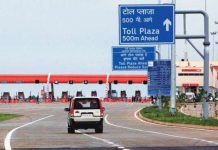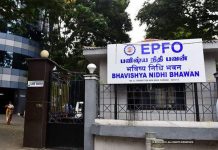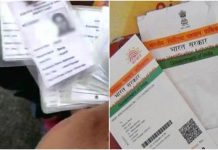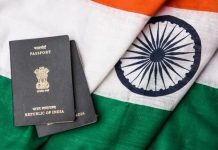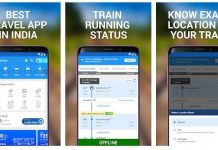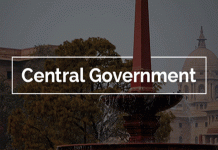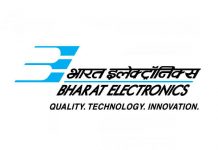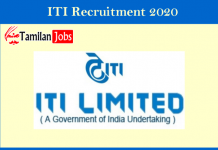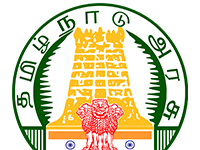
Accidents take place on a daily basis in India and although the rich and the middle class can afford to take accidental insurance, the poor find it difficult to take accidental insurance as the premium payment is too high. The government realised this problem and announced Pradhan Mantri Suraksha Bima Yojana as a social security scheme that will provide compensation to the deceased’s family. The premium payment is low and affordable by the poor.
Pradhan Mantri Suraksha Bima Yojana is Indian Government’s accidental insurance cover which was announced in the 2015 Budget. This scheme was launched to provide personal accident insurance to the high risk category such as mechanics, labourers, truck drivers which involves a lot of travelling. It is also one of the cheapest insurance cover. The scheme also covers both partial and permanent disability cover.
This scheme is available to those between the ages of 18 and 70 years and they must have a bank account. The annual premium of the scheme is Rs.12 excluding the service tax. The premium amount is automatically debited from the bank account of the scheme holder. Rs.2 lakh is paid to the nominee if the subscriber dies in an accident or if he is fully disabled. If the subscriber meets with an accident and suffers partial permanent disability, then Rs.1 lakh is paid.
Pradhan Mantri Suraksha Bima Yojana is a social security scheme offered by the government to the people in the Below Poverty Line category. Accidents don’t occur based on whether an individual is rich or poor. However, a personal accident insurance is affordable only by the rich and middle income groups. Understanding the plight of the poor, the Indian government launched the PMSBY scheme after the success of Pradhan Mantri Jan Dhan Yojana scheme.
The death benefit of PMSBY is up to Rs.2 lakhs. In the case of total disability such as the loss of both hands or eyes, the insurance cover is up to Rs.2 lakh. In the case of partial disability such as the loss of one limb or eyes, the sum assured is Rs.1 lakh. The insurance premium of PMSBY scheme is Rs.12 per annum for each member. The premium amount will be deducted from the bank savings account of the policyholder via auto-debit facility every June.
Individuals between 18 to 70 years of age can apply for PMSBY scheme. To be registered under the scheme, aadhaar card must be furnished as KYC document. PMSBY policy will be terminated if the policyholder reaches 70 years of age, the bank savings account doesn’t have minimum balance to pay the premium via auto-debit facility or having more than one policy under the same scheme. This scheme was launched in 2015, by 2016, 124 million Indians had enrolled for the PMSBY scheme.
Pradhan Mantri Suraksha Bima Yojana scheme involves numerous banks and insurance companies. The participating banks are as follows:
- Allahabad Bank
- Axis Bank
- Bank of India
- Bank of Maharashtra
- Bharatiya Mahila Bank
- Canara Bank
- Central Bank
- Corporation Bank
- Dena Bank
- Federal Bank
- HDFC Bank
- ICICI Bank
- IDBI Bank
- IndusInd Bank
- Kerala Gramin Bank
- Kotak Bank
- Oriental Bank of Commerce
- Punjab and Sind Bank
- Punjab National Bank
- South Indian Bank
- State Bank of Hyderabad
- State Bank of India
- State Bank of Travancore
- Syndicate Bank
- UCO Bank
- Union Bank of India
- United Bank of India
- Vijaya Bank
Participating Insurance companies are as follows:
- Bajaj Allianz
- Cholamandalam MS
- ICICI Lombard
- National Insurance
- New India Assurance
- Reliance General Insurance
- United India Insurance
- Universal Sompo
Features of Pradhan Mantri Suraksha Bima Yojana:
The features of this scheme are as follows:
- The accidental death insurance cover renewable each year.
- The annual premium to be paid is Rs.12. This premium is excluding the service tax which is charged at 14%.
- Up to Rs.2 lakh cover is payable to the nominee of the subscriber if he or she dies in an accident or is totally disabled due to the accident.
- The premium is auto debited from the bank account of the subscriber.
- The subscriber can avail the long term option or renew the scheme every year.
- The subscriber can exit the scheme at any time and can sign-up at any time in the future.
Benefits of Pradhan Mantri Suraksha Bima Yojana:
The benefits of this scheme are as follows:
| If accident causes the subscriber’s death | Rs.2 lakh is paid to the nominee. |
| If an accident leads to total and irrecoverable loss of use if both hands or feet, loss of eyes or loss of sight in one year and loss of use of a hand or foot | Rs.2 lakh is paid. |
| If accident causes irrecoverable and total loss of sight of one eye and loss of use of one hand or foot | Rs.1 lakh is paid. |
The subscriber can also avail deduction under Section 80C for the premium paid.
The sum insured received up to Rs.1 lakh is tax free under Section 10(10D).
Eligibility Criteria of Pradhan Mantri Suraksha Bima Yojana:
The eligibility criteria for subscribing for Pradhan Mantri Suraksha Bima Yojana is as follows:
- The minimum age requirement is 18 years.
- The maximum age requirement is 70 years.
- Those having a savings bank account and falling under the age group of 18 – 70 years are eligible to subscribe to the policy.
- The bank account must be linked with the Aadhaar card.
- If the bank account is not linked with the Aadhaar card, then the Aadhaar card copy must be attached with the application form.
- If the individual has more than one savings account, he or she is only eligible to join the scheme through a single bank account.
- Premium to be paid is Rs.12 yearly.
- The premium amount is auto debited from the insured’s bank account.
- The scheme is valid for a year and it can be renewed at the end of the year.
- The primary KYC document required is the applicant’s Aadhaar card.
Documents Required:
The Pradhan Mantri Suraksha Bima Yojana application form is to be duly filled. The details to be filled are:
- Name
- Aadhaar number
- Contact information
- Nominee details
- The application form is available in English, Hindi, Bengali, Marathi, Oriya, Telugu, Tamil and Gujarati.
The only document that has to be submitted along with the application form is the Aadhaar Card copy if the Aadhaar is not linked to your savings bank account.
How to Enrol for Pradhan Mantri Suraksha Bima Yojana?
The subscriber can approach either one of the participating bank or insurance companies to subscribe to Pradhan Mantri Suraksha Bima Yojana.
Most of the reputed banks allow the subscribers to take the policy through internet banking. The subscriber will have to log in to the Internet banking account and enrol for the scheme.
Subscriber can also send a message through their registered mobile number to the toll free numbers of the banks and the insurance companies.
The toll free number for different state and the names of the convenor banks are as follows:
| State | Convenor Bank | Toll Free number |
| West Bengal and Tripura | United Bank of India | 1800-345-3343 |
| Uttarakhand | State Bank of India | 1800-180-4167 |
| Uttar Pradesh | Bank of Baroda | 1800-102-4455 or 1800-223-344 |
| Tamil Nadu | Indian Overseas Bank | 1800-425-4415 |
| Telangana | State Bank of Hyderabad | 1800-425-8933 |
| Sikkim | State Bank of India | 1800-345-3256 |
| Rajasthan | Bank of Baroda | 1800-180-6546 |
| Punjab | Punjab National Bank | 1800-180-1111 |
| Puducherry | Indian Bank | 1800-4250-0000 |
| Odisha | UCO Bank | 1800-345-6551 |
| Nagaland | State Bank of India | 1800-345-3708 |
| Mizoram | State Bank of India | 1800-345-3660 |
| Meghalaya | State Bank of India | 1800-345-3658 |
| Manipur | State Bank of India | 1800-345-3858 |
| Maharashtra | Bank of Maharashtra | 1800-102-2636 |
| Madhya Pradesh | Central Bank of India | 1800-233-4035 |
| Lakshadweep | Syndicate Bank | 1800-4259-7777 |
| Kerala | Canara Bank | 1800-425-11222 |
| Karnataka | Syndicate Bank | 1800-4259-7777 |
| Jharkhand | Bank of India | 1800-345-6576 |
| Himachal Pradesh | UCO Bank | 1800-180-8053 |
| Haryana | Punjab National Bank | 1800-180-1111 |
| Gujarat | Dena Bank | 1800-255-885 |
| Goa | State Bank of India | 1800-2333-202 |
| Delhi | Oriental Bank of Commerce | 1800-1800-124 |
| Daman and Diu | Dena Bank | 1800-225-885 |
| Dadra and Nagar Haveli | Dena Bank | 1800-225-885 |
| Chhattisgarh | State Bank of India | 1800-233-4358 |
| Chandigarh | Punjab National Bank | 1800-180-1111 |
| Bihar | State Bank of India | 1800-345-6195 |
| Assam | State Bank of India | 1800-345-3756 |
| Arunachal Pradesh | State Bank of India | 1800-345-3616 |
| Andhra Pradesh | Andhra Bank | 1800-425-8525 |
| Andaman and Nicobar Island | State Bank of India | 1800-345-4545 |
The convenor bank is not the only bank in the state that allows you to subscribe to the PMSBY scheme, you can subscribe through the various participating banks.
Conditions for Termination of Pradhan Mantri Suraksha Bima Yojana:
The accidental cover will be terminated on following conditions and no benefits will be payable:
- When the subscriber attains 70 years.
- If the savings bank account is closed due to non-maintenance of the minimum balance that is required to keep the insurance in force.
- If the subscriber is covered through more than one account, the insurance cover will be restricted to one account and the extra premium paid will be forfeited.
- If the insurance cover is ceased due to technical reasons or due to insufficient balance, the same can be reinstated after the premium is paid in full. The risk cover for that period will be suspended and the risk cover is reinstated at the sole discretion of the insurance company.
- The participating banks will have to deduct the premium in the month when the auto debit option is given and that amount will be remitted to the insurance company in that same month.
Claim Process of PMSBY:
The following is the procedure to claim for the benefits under PMSBY:
- The insured or the nominee (in the event of death) must immediately inform the bank about the occurrence of the accident.
- Claim form must be obtained from the bank or designated insurance companies or via the website. The form is to be duly filled.
- The completed claim form is to be submitted to the bank branch within 30 days from the day of occurrence of the accident.
- The claim form is to be supported by original FIR, post mortem report, death certificate or in case of disability, disability certificate that is issued by a Civil surgeon. Discharge certificate should also be enclosed.
- The bank will verify the account details and then forward the case to the insurance company within 30 days of the submission of the claim.
- The insurer will then confirm that the insured is in the list of the insured persons in the master policy.
- The claim will be processed within 30 days of receiving the documents from the bank.
- The admissible claim will be then remitted to the nominee’s or the insured’s account.
- If the insured has not appointed a nominee, then the death claim will be paid to the legal heir. The legal heir must produce the succession certificate.
- The maximum time that is allowed for the bank to finish the claim procedure is 30 days.
Following information is to be furnished in the claim process form:
- Name of the insured
- Full address of the insured
- Name and address of the bank branch
- Savings bank account number
- Contact number of the insured, i.e. mobile number, phone number, email address and Aadhaar number
- Details of nominee, i.e. name, mobile or phone number, email address, bank account for electronic transfer and Aadhaar number.
- Details of accident, i.e. the day, date and time of occurrence, place of occurrence, nature of the accident and cause of death or the details of injury
- Name and address of the hospital or the attending doctor along with the contact details
- Time and date of when the medical officer of the company can visit the insured.
- Details of the documents that have been submitted
The nominee or claimant will have to sign the declaration and mention the policy number and claim number along with the date. The authorised bank official will further review the form and sign it and pass it on to the insurance company.
The Pradhan Mantri Suraksha Bima Yojana scheme aims to bring the insurance coverage to the uninsured sector. The scheme also serves the goal of financial inclusion by penetrating the insurance to the weaker sections of the society and thus ensuring financial security. The benefits received up to Rs.1 lakh is tax free under Section 10(10D) of the IT Act, 1961.

